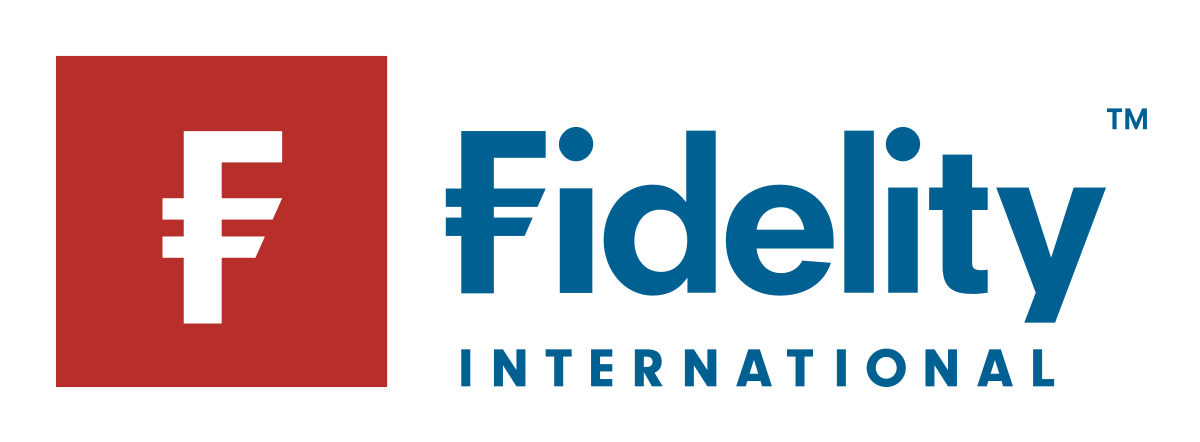Quality smart beta ETFs could offer the ideal long-term factor exposure for investors seeking to look beyond the seemingly pendulous swing in favour between growth and value equities.
Illustrating this, the MSCI World index would have turned $100 into $338 between July 2006 and July 2021 and the MSCI World Value index would have generated just $240. Meanwhile, the MSCI World Quality index would have generated $551 during the same timeframe.
Even more impressive, though, is its quality benchmark even outperformed the MSCI World Growth index, which would have returned $463, and it did so with a lower risk-return profile.
It does this by focusing on stocks with stable earnings, strong balance sheets and higher margins to outperform over the long term. Therefore, a focus on stability and future prospects, which differentiates from the value factor focus on undervalued opportunities.
While a number of ETFs offering pure quality factor exposure have existed in Europe for the last seven years, issuers have also launched several ETFs combining quality and income factors to create baskets designed to offer steady sailing returns with strong dividend pay-outs.
This seems intuitive, given that MSCI’s factor scorecard shows its world quality benchmark tends to overweight large caps and low volatility while relatively underweighting value and yield-paying stocks.
Comparing the landscape of quality strategies, ETF Stream looks at eight ETFs with global exposure to the quality factor.
iShares Edge MSCI World Quality Factor UCITS ETF (IWQU)
First on our list is the largest and second longest-standing pure quality factor ETF, IWQU, which launched in October 2014 and has assets under management (AUM) of $2.6bn.
Rebalancing semi-annually and tracking the MSCI World Sector Neutral Quality index, IWQU offers exposure to 299 large and mid-cap equities – the same number as its parent quality index – across 23 developed markets.
Rather than being agnostic towards different industries, the index takes a sample of companies that score highly versus peers within their sector on quality metrics, including high return-on-equity, low leverage and low earnings variability.
IWQU has a total expense ratio (TER) of 0.30%. Its top holdings resemble many US large-cap regulars, including Facebook, Microsoft, Apple, Nike and Johnson & Johnson.
Xtrackers MSCI World Quality UCITS ETF (XDEC)
Next is the second largest and longest-standing quality smart beta strategy, XDEC, which entered in September 2014 and has since gathered $881m AUM.
XDEC tracks the same MSCI index as IWQU and also rebalances twice a year, with one notable amendment to its top ten holdings.
While the BlackRock product more closely replicates its underlying index by featuring Target Corp, XDEC holds UnitedHealth Group, which is not featured in the top ten holdings of the sector neutral quality benchmark but is featured in the MSCI World Quality index.
Arguably the main difference between the two pure quality factor ETFs are their fees, with XDEC charging a lower fee of 0.25%.
Fidelity World Quality Income UCITS ETF (FGEQ)
First of the quality income ETF range is FGEQ, which launched in March 2017 and has $334m AUM.
FGEQ rebalances annually and tracks the Fidelity Global Quality Income index which measures the performance of large and mid-cap companies in the S&P Developed Ex-Korea BMI index.
Broadly GICS sector and country neutral versus its selection universe, FGEQ’s underlying index targets companies with relatively high dividend yields and quality attributes, including free cash flow margin, return on capital and free cash flow stability. It also excludes companies involved in activities against the United Nations’ Global Compact.
The product with the second-highest fee on our list, FGEQ has a TER of 0.40%. While launching later and offering a slightly different exposure to its MSCI counterparts above, it shares many of the same top weightings, with others also falling within the US large-cap segment.
WisdomTree Global Quality Dividend Growth UCITS ETF (GGRG)
Launched nine months before FGEQ, GGRG debuted in June 2016 and has collected $84m assets.
The ETF replicates the WisdomTree Global Developed Quality Dividend Growth index of 600 companies that satisfy the firm’s screens for minimum liquidity and ESG.
Rebalanced annually, the index weights constituents based on dividend income paid during the annual cycle, as well as the firm’s own composite risk score, which is equally based on WisdomTree’s momentum and quality factor metrics.
GGRG carries a TER of 0.38%. Much like its previous counterparts, a number of its largest weightings are awarded to US large-cap equities, however, its dividend screen means UK large caps such as BHP, GlaxoSmithKline, Rio Tinto and Unilever are also awarded large allocations.
iShares MSCI World Quality Dividend UCITS ETF (WQDA)
Starting off the second half of our list is the newest fund in the category, WQDA, which launched in May 2020 and has since gathered $44m assets.
The ETF tracks the MSCI World High Dividend Yield index of 302 large and mid-cap stocks across 23 developed markets and rebalances semi-annually.
The benchmark seeks to weight towards stocks in its parent world index, excluding REITs, which have average dividend yields that are sustainable. It also applies a negative screen against low quality that looks at 12-month past performance and highlights potentially worsening fundamentals which might worsen income prospects for investors.
Unfortunately, while MSCI’s quality factor index outperformed its world benchmark considerably over the last 15 years, the provider’s high dividend yield index offered non-income returns of $257 on an initial investment of $100, almost 24% below its parent benchmark over the same period.
Interestingly, its focus on income-paying stocks means its top ten weightings look very different to others on the list, with a notable absence of big tech names, while Johnson & Johnson, Nestle and Proctor & Gamble claim large allocations with the top spot going to the BlackRock ICS US Dollar Liquidity fund.
WQDA boasts a mid-ranking TER of 0.38%.
Invesco FTSE RAFI A World 3000 UCITS ETF (PSRW)
Next, PSRW’s debut in December 2007 makes it the oldest global ETF with a quality screen available to European investors – though it currently has a moderate $37m AUM.
Mirroring the FTSE RAFI All-World 3000 index and rebalancing whenever changes are made to its underlying benchmark, PSRW offers broad exposure to 3,000 companies with the highest fundamental scores selected from the FTSE Global All Cap index.
Metrics used to decide constituent weightings include total cash dividends, free cash flow, total sales and book equity value. FTSE Russell noted weightings are not determined by market values, meaning its indices are not prone to excessive single-stock concentration arising from market fads.
While boasting the most diverse basket of the global quality factor cohort, its top holdings are still dominated by US large cap plays, with the notable addition of cyclical sector names such as Exxon Mobil and Chevron alongside the regular big tech titles.
PSRW also has a mid-ranking TER of 0.39% and like WQDA, its index underperformed its parent world benchmark. The FTSE All-World index returned 95.1% over the five years to July 2021, while the PSRW underlying basket returned 73.8%.
Lyxor SG Global Quality Income NTR UCITS ETF (SGQD)
Our second-smallest quality ETF is also our second oldest. Having launched in November 2012, SGQI boasts a modest $4m AUM.
Tracking the SG Global Quality Income NTR index, SGQD offers equal-weighted exposure to 75 companies with strong balance sheets and a sustainable dividend, with a minimum market cap of $3bn and excluding financial services equities.
With its slow-and-steady focus on consistent income payments, SGQD differentiates from its peers by having a 35.1% allocation to utilities sector stocks, with seven of its top ten holdings allocated to utility names such as SSE, Energy Co and Severn Trent.
While boasting a dividend yield of 4.9% per year at present, the ETF has offered equity returns of 28.4% over the past five years, some way short of the 70.6% returned by ETFs tracking MSCI’s vanilla world index. SGQD’s TER is on the higher side, at 0.45%.
First Trust Global Equity Income UCITS ETF (FGBL)
Finally, First Trust’s FGBL rounds off our list, having entered in August 2015 and collecting just $3m in assets since then.
Tracking the NASDAQ Global High Equity Income index, FGBL offers market-cap-weighted exposure to 268 companies from the NASDAQ Global index, excluding REITs, based on their liquidity, ability to increase their dividend pay-outs and score well on quality metrics.
All but the bottom quintile of the original investment universe by return on assets are included, along with those with long term debt to assets below 75%, a three-year dividend pay-out ratio lower than 90% and those with a positive cash flow.
Those that satisfy these screens are then weighted by ‘net income minus dividends paid’ or ‘plough-back’, with weighting caps of 3% and 1% for developed and emerging market equities, respectively.
The ETF’s underlying index also has an intricate rebalancing structure. While the ETF reweights monthly, its benchmark’s holdings are reconstituted sequentially on a semi-annual basis, with its sector segments broken down into six distinct sub-portfolios, each of which receives a 16.7% allocation.
With the sub-portfolios undergoing monthly rebalances one month after another – with a total reset at the end of each calendar year – this goes some way to explaining FGBL’s considerably higher TER of 0.60%.
Despite the complex index and its sector rebalancing methodology, FGBL is currently 36% weighted to financials, and excluding dividend income, has only managed half of the annualised equity returns of its comparison benchmark – the MSCI ACWI index – over the past five years.









